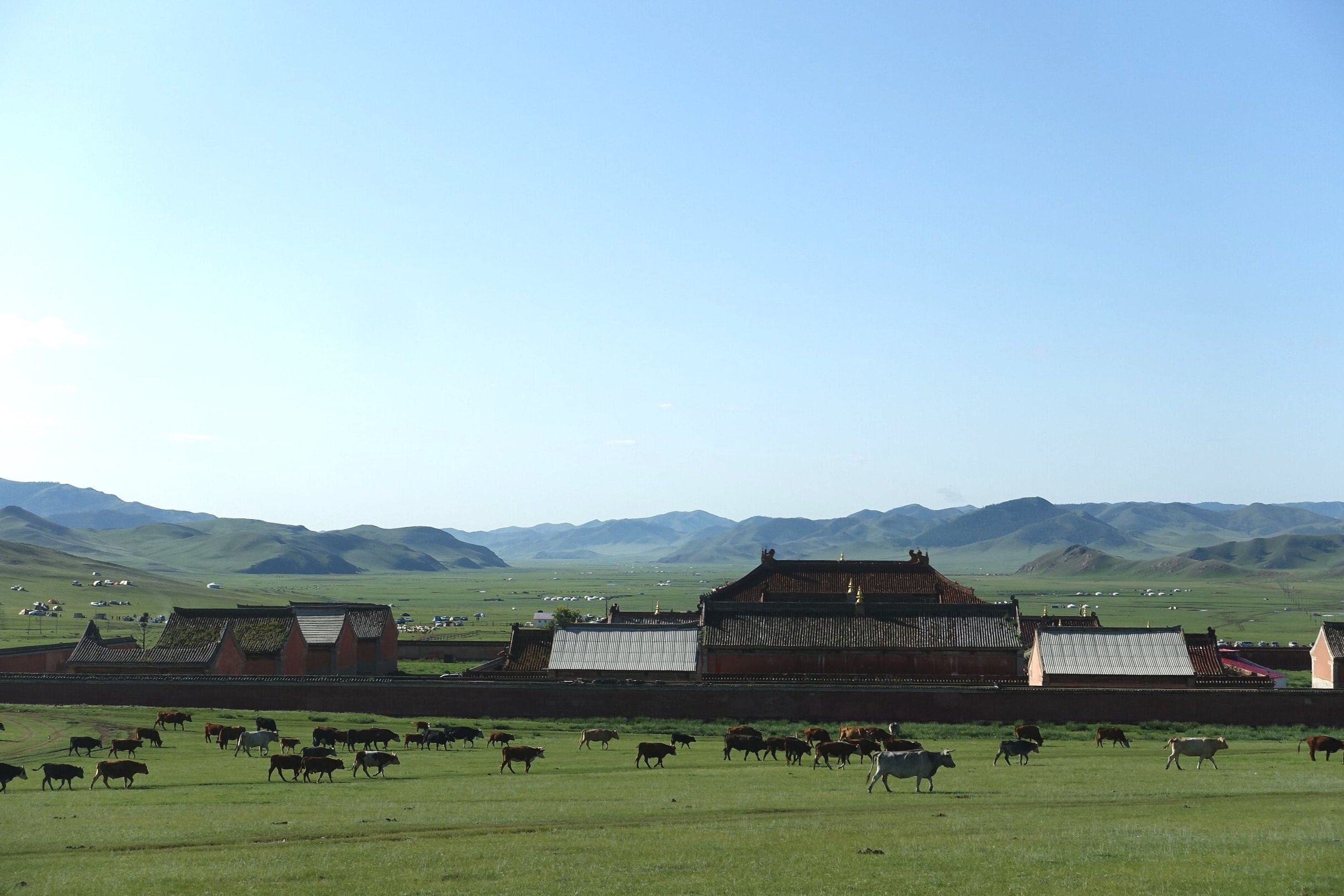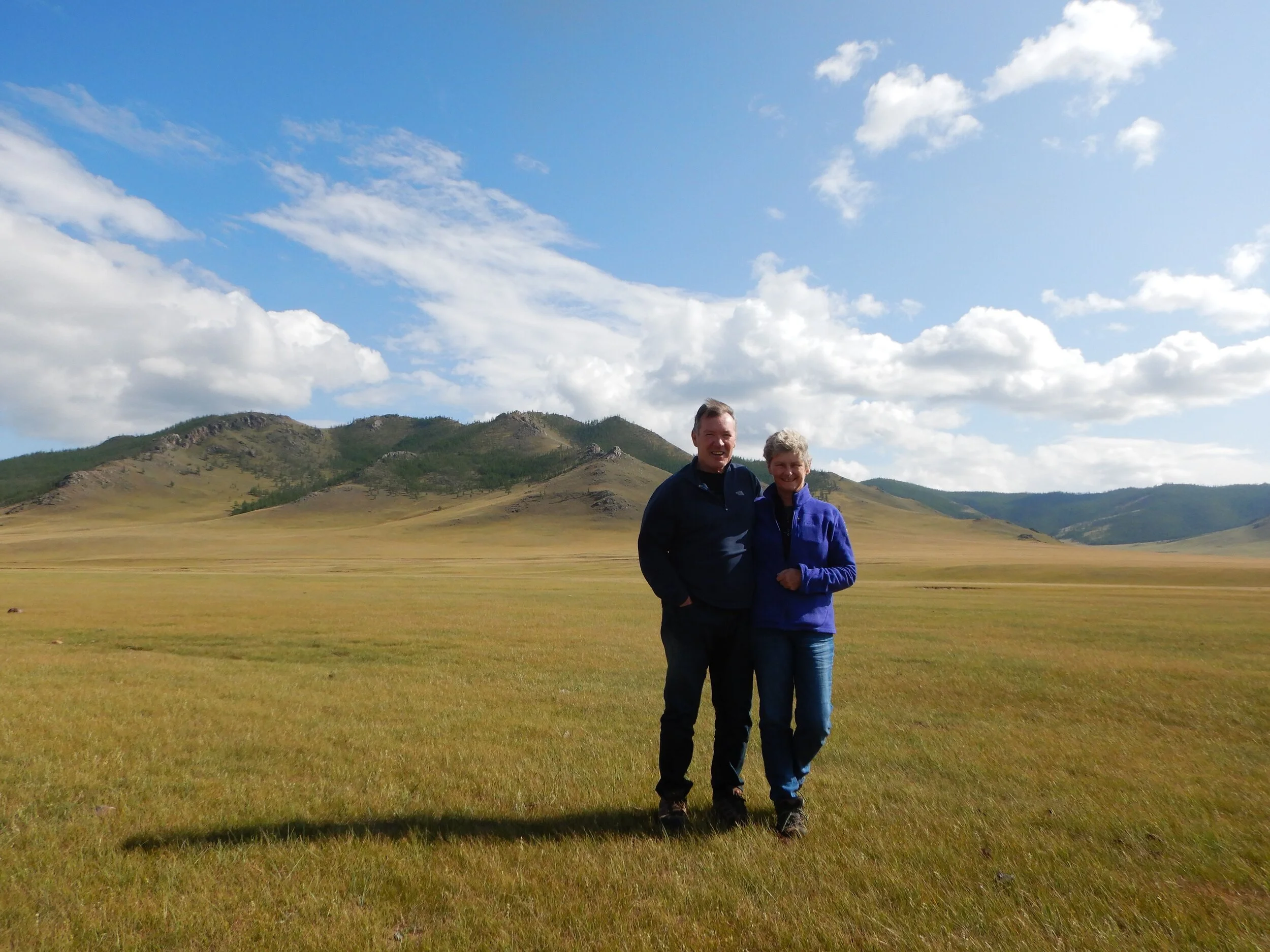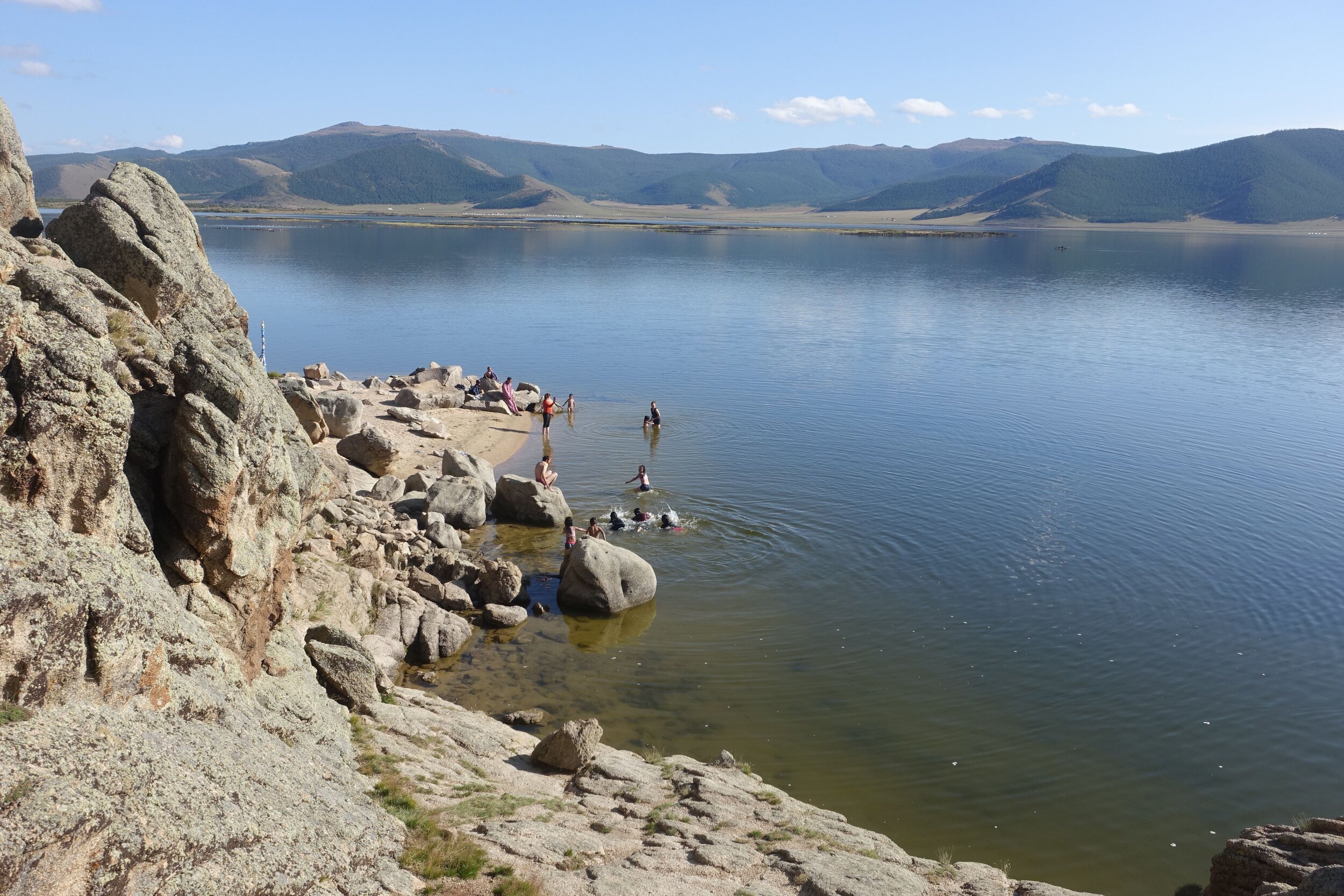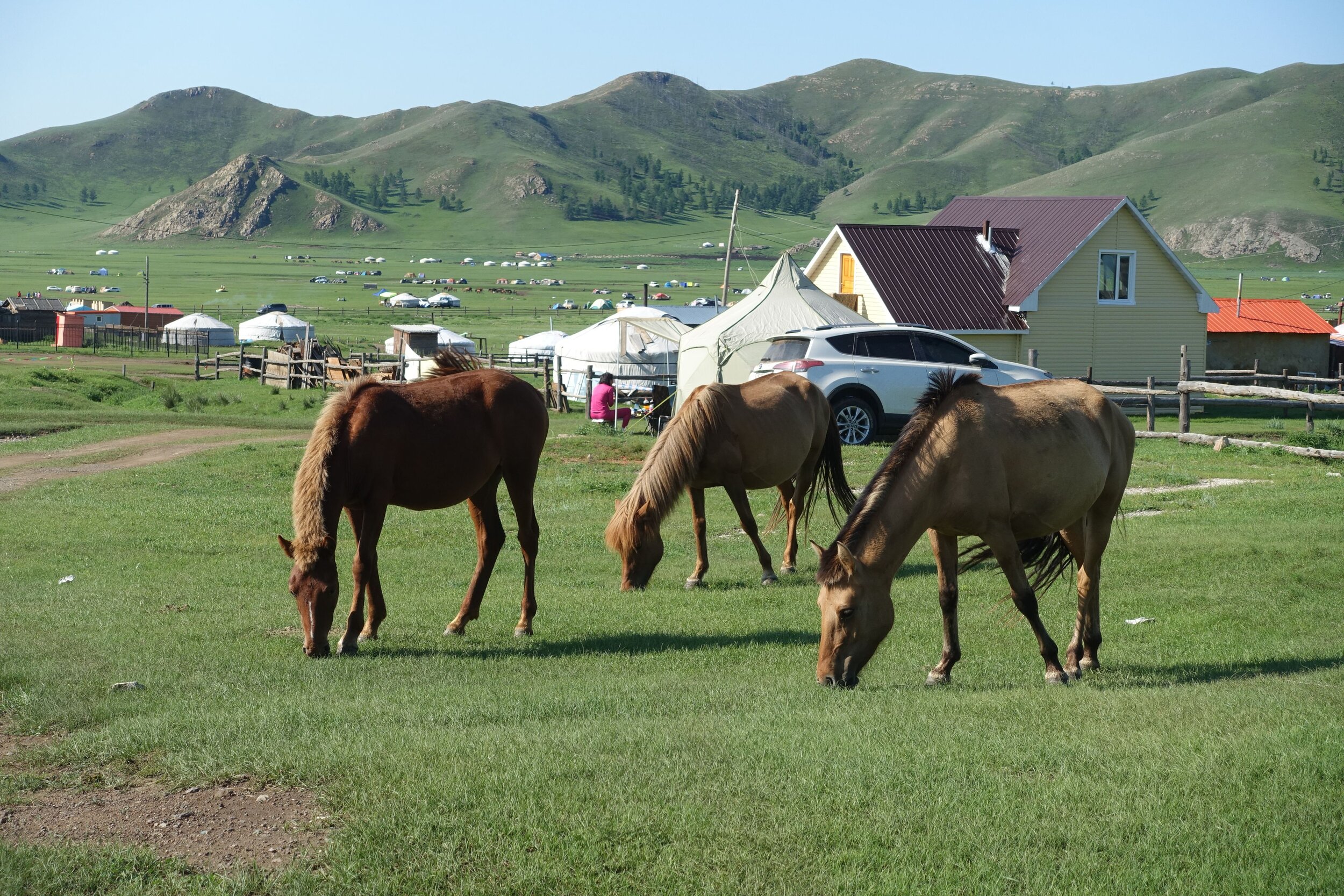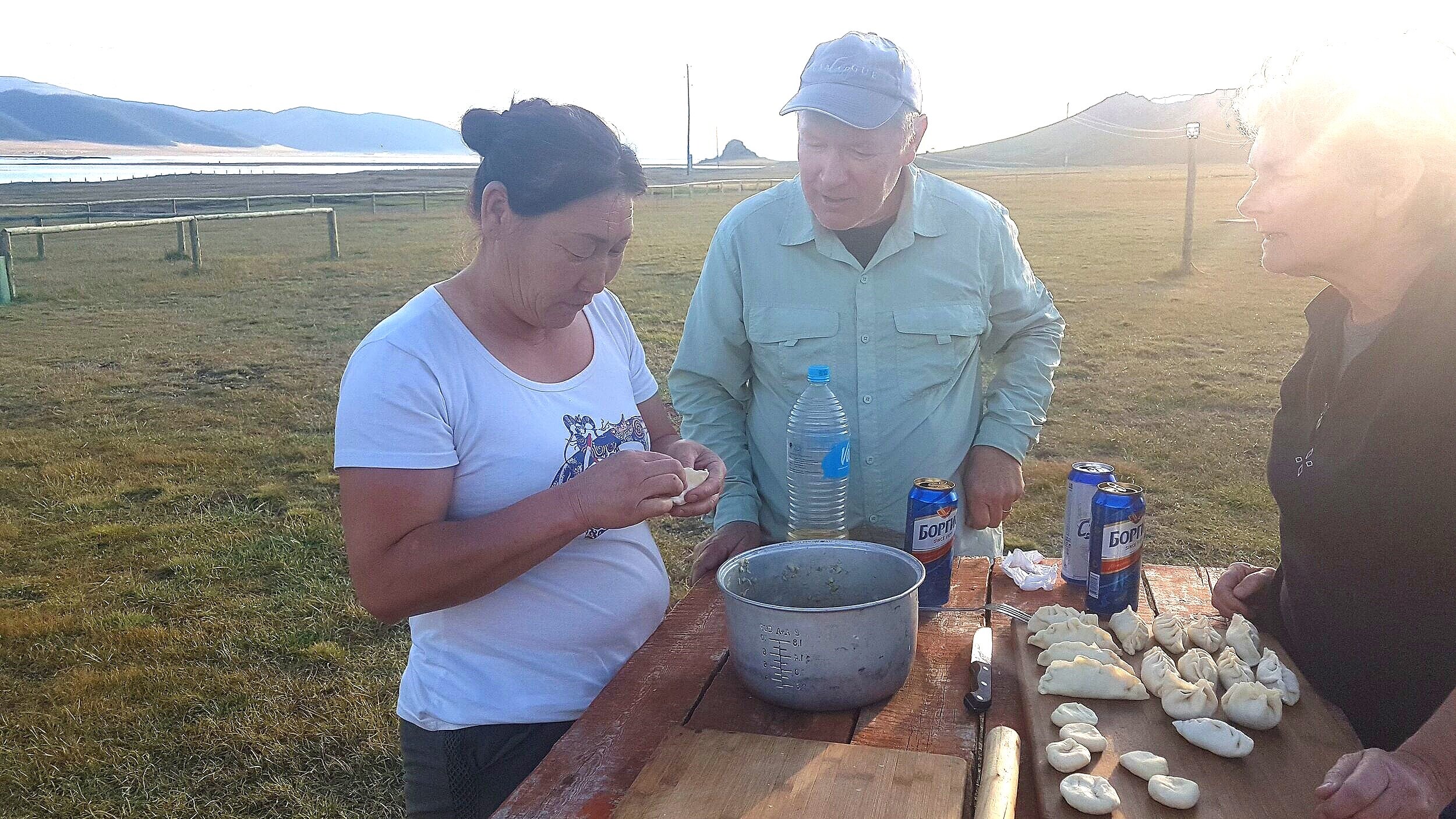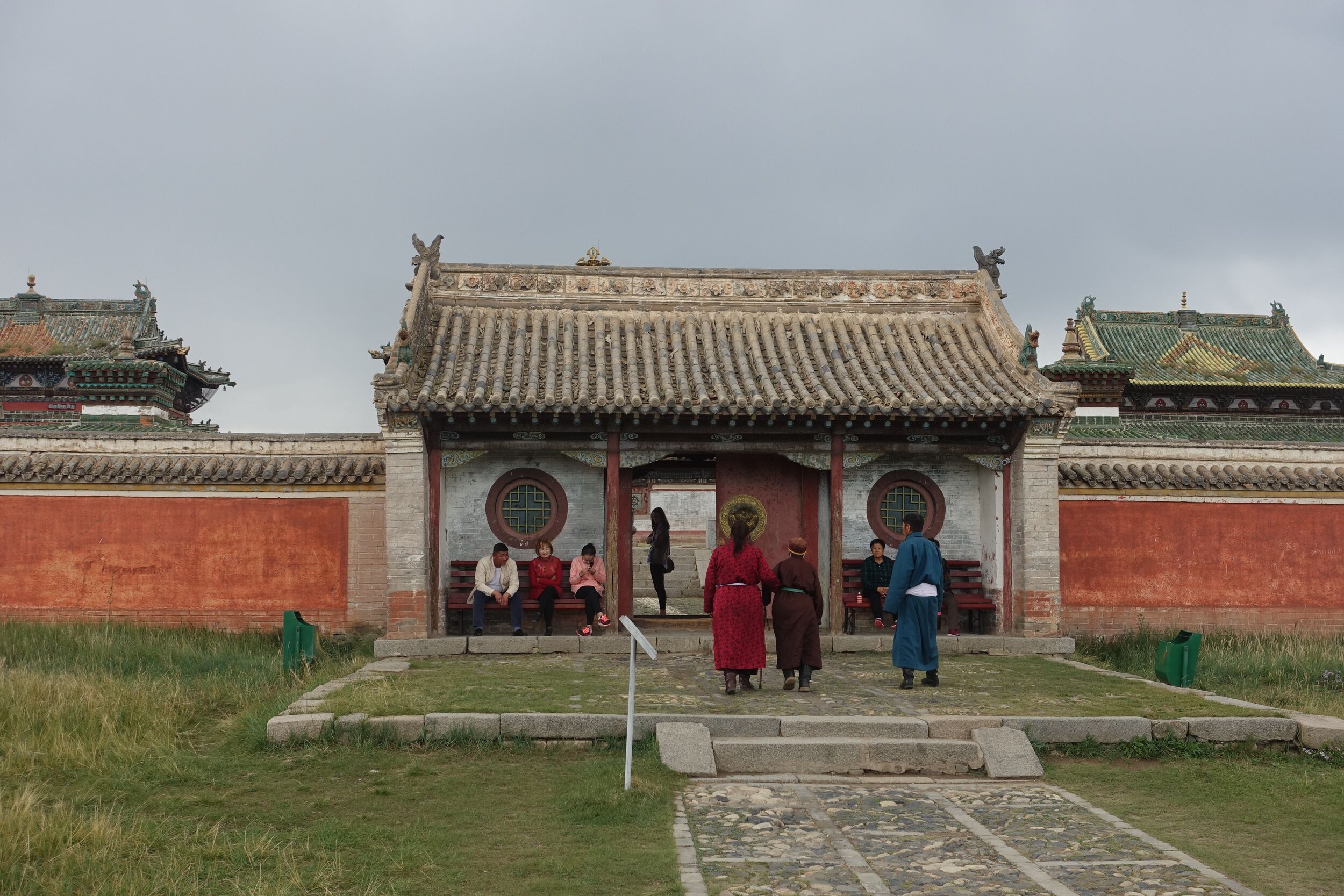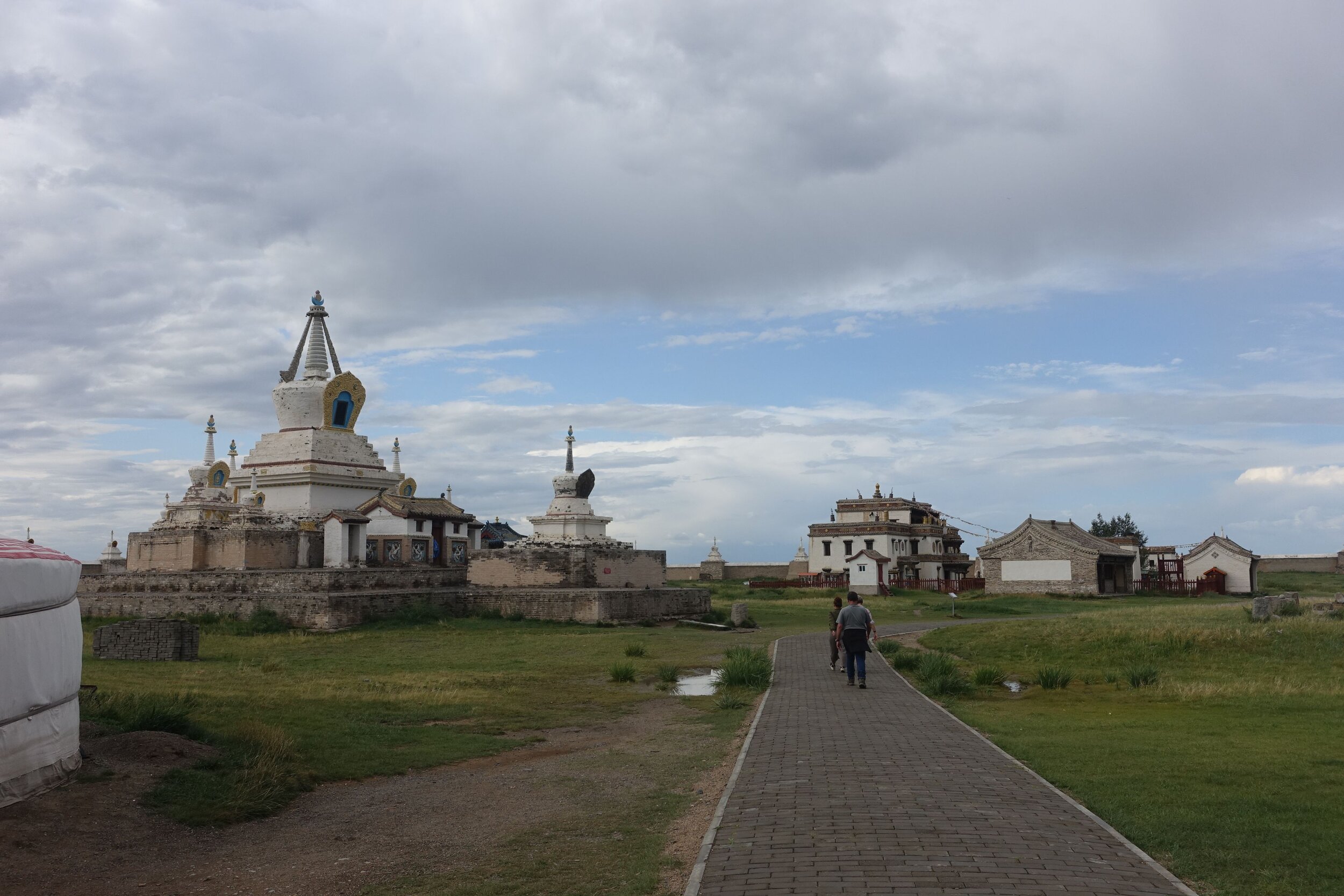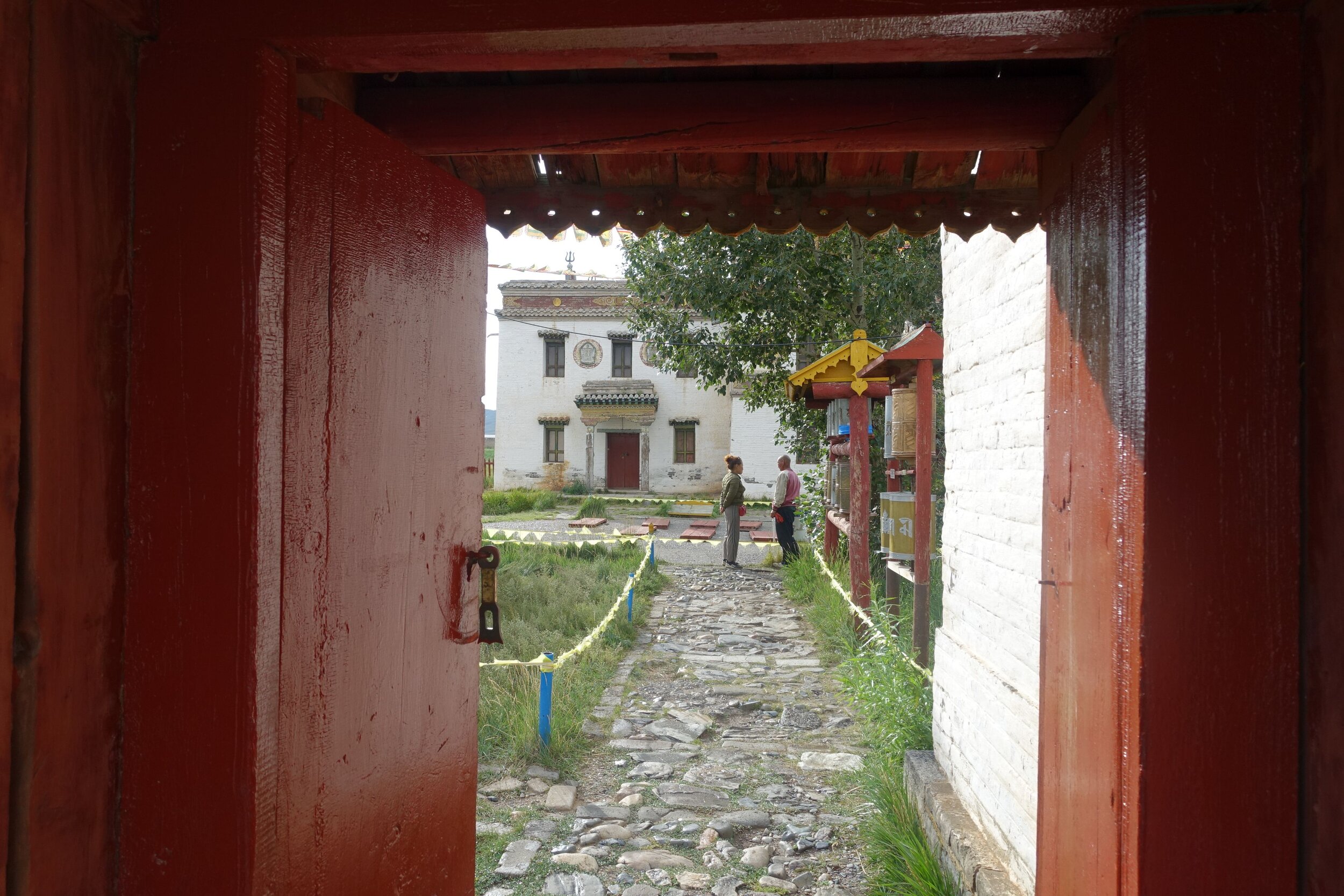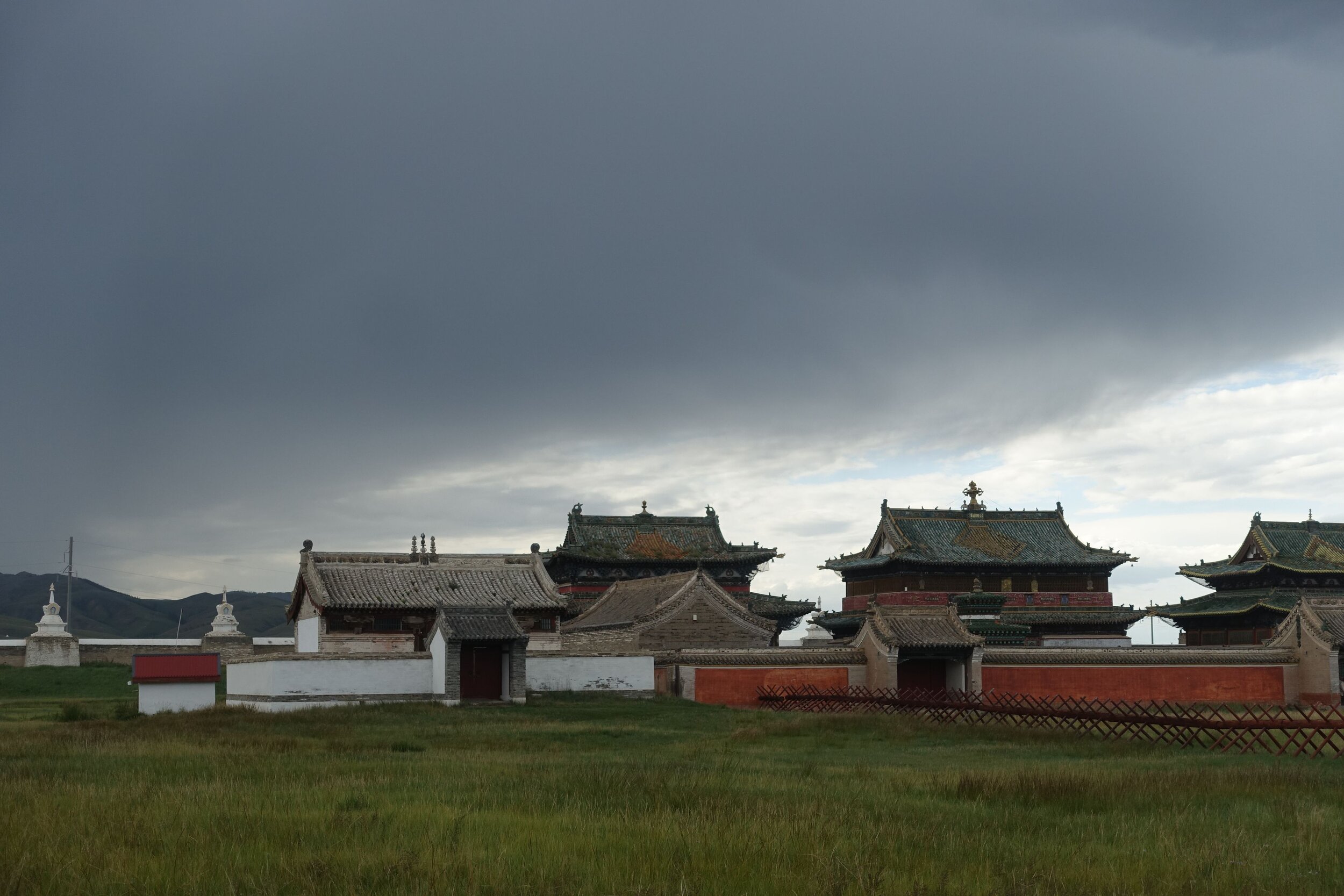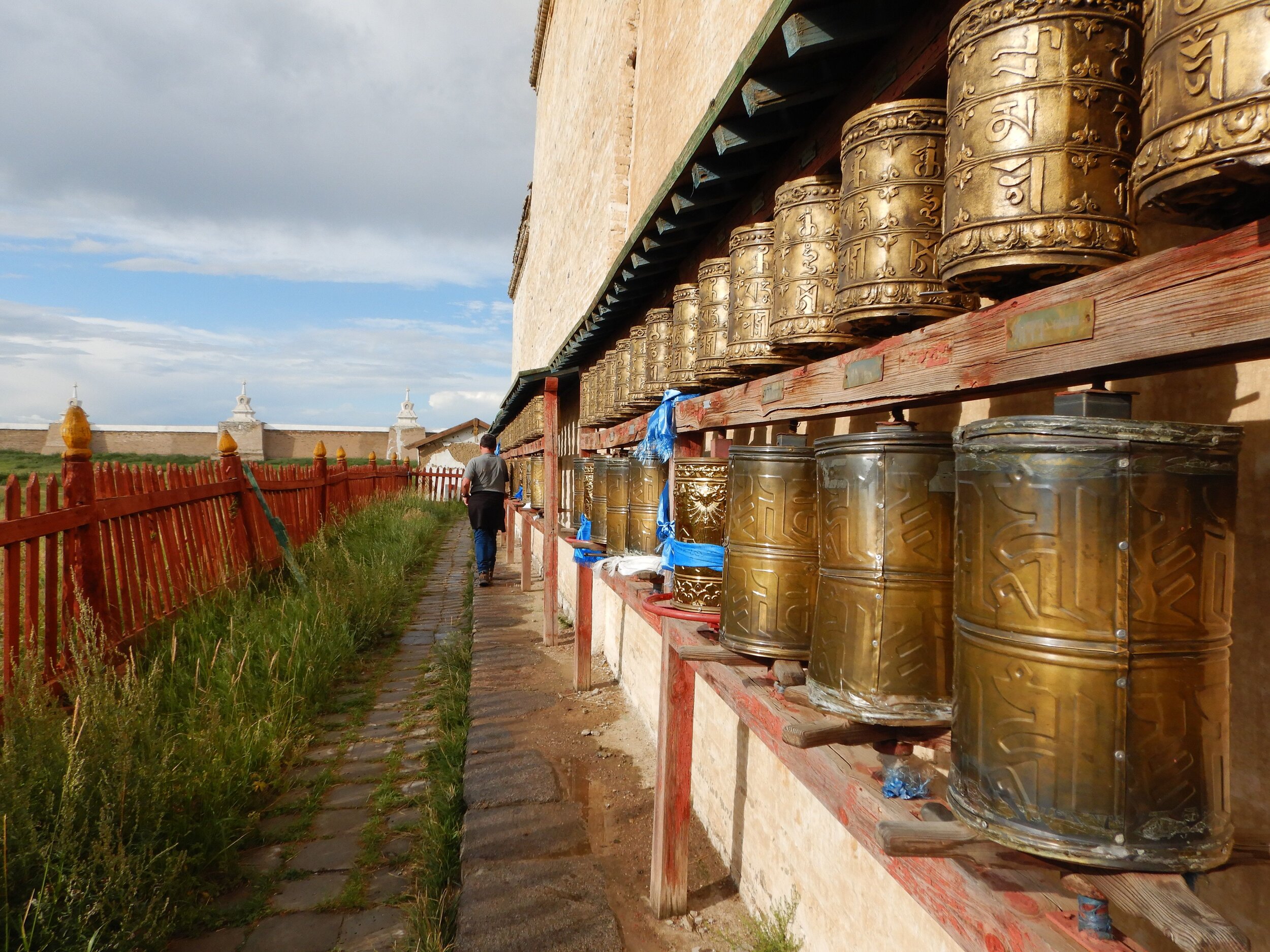Classic Mongolia Circuit Part 1: Northern and Central Mongolia
/Introduction
In planning our trip to Mongolia a few things became very clear. Firstly, we would need our own transport, and preferably with a driver and guide rather than self-drive. The roads are rough and, in many instances, just vague tracks across the steppe and desert with little if any signposting.
Mongolian road - spectacular landscape, vague track.
Secondly, it seemed that there was a classic circuit that took in most of the main sights in the centre of the country (excluding the far west and east). With the time we had available (ie a 30 day visa) we would try to see most of the sights on this circuit.
giant statue of Chinggis khaan
And thirdly, if we wanted to get a sense of Mongolian traditional life and culture then staying in basic gers (the Mongolian name for yurts) with nomad families rather than hotels or more up-market ger camps set up largely for foreigners, was the way to go.
We did our research and came up with a small, local tour company called Man of Millenium to go with (a reference to Mongolia’s number one historical figure – Chinggis Khaan). The 18 day itinerary for their Classic Mongolia trip fitted perfectly with where we wanted to visit so we decided to opt for that. (See End Note at the end of Part 2 for more details on MoM).
The circuit was to take us anti-clockwise from the capital, Ulaan Bataar (UB) north to Lake Khuvsgol near the Russian border, then down to the far south of the country in the Gobi Desert before heading north back to UB. (By the way, we quickly learned that the locals call it UB for short.)
sukhbataar square, ub
So, with brother Pete, our guide Degi (a young Uni student who guided during her holidays) and our driver Baagii, the five of us set off on a Classic Mongolian Adventure.
pete, cally, degi, baagii and ken (Photo courtesy of uuna, mom)
Here’s how it went.
Day 1 – Amanabayasgalant Monastery
After taking the obligatory team shot we headed out of a wet UB to the north with our first destination the monastery Amanbayasgalant. Around three quarters of all Mongolians are Buddhist, with Mongolian Buddhism having strong historical links to Tibetan Buddhism.
the monastery
This was our first experience of the endless green hills and plains of the Mongolian steppe (grassland). As Degi pointed out Mongolia has only 3 million people but over 70 million grass eating livestock. They were certainly apparent from day one.
livestock grazing near the monastery
We had a brief roadside stop with some of Degi’s relatives at a town along the way, and they came bearing homemade yoghurts and dried curd snacks (the first of many we would consume).
a roadise catch up with degi’s relatives
It was also clear very soon into the trip that we’d made the right decision to hire a driver who knew which obscure dirt tracks to take rather than try to drive ourselves.
luckily baagii knew where he as going
After a longish day (6 or so hours driving) we arrived at the monastery. As luck would have it it was a Friday night and the start of a two day celebration at the monastery. It was a sort of Mongolian religious Woodstock with cars, tents and gers all over the valley surrounding the monastery.
the monastery is on the left, surrounded by gers, tents and cars.
We checked in to our family-run ger, taking a few minutes to sit with the family and drink the traditionally salty milk tea (there’s no actual tea in it, it’s basically warm salty milk) and to eat some home-made curd snacks. It is customary, when arriving at a ger, to be greeted as a guest in this fashion, something we became very accustomed to over the next couple of weeks.
After settling in we took an evening stroll to the top of a nearby temple over-looking the monastery, and then to the monastery itself.
Day 2 - From the monastery to an extinct volcano
We spent the morning checking out the monastery then observing the first part of the celebrations. This involved two rows of monks chanting, banging drums and cymbals, and blowing impressively long horns.
The monks were all ages starting with young boys who were novices.
young novice monks
The monastery dates back to early part of the 18th century and was lucky to survive the Stalinist purges of the 1930’s when monasteries all over the country were destroyed and thousands of monks killed.
the monastery from the adjacent temple
It was then back in the van for a 6 hour drive to Uran Togoo, an extinct volcano.
uran togoo
After checking in to our next family-run ger and completing the pleasantries of milk tea and curd snacks it was off in the late afternoon to climb the volcano.
our ger camp
The climb was reasonably steep, so our dodgy knees were glad we’d brought our walking sticks with us.
We were also surprised that there were quite a few other people doing the climb - a mix of Mongolian and overseas tourists. But it was worth the effort.
wildflowers on the crater rim
We even decided to do the extra bit down to the small lake at the bottom of the crater.
heading down to the crater lake
It was then back to our ger for a well-earned rest and dinner.
the road back to camp
A note on ger accommodation. It seems that there are different levels of ger accommodation in Mongolia, ranging from big ger camps which cater for more well-healed tourists, both local and international, to small family-run operations. The family-run versions are for the more budget oriented travellers. Some families have just a few gers while others have a dozen or more and are more towards the ger camp model. Family run gers usually don’t have showers and toilet facilities are very basic (ie two boards with a gap in between for ‘deposits’ positioned in a distant out-house). Many Mongolian tourists stay in these smaller family run operations as do budget overseas tourists.
typical toilet at a family-run ger camp.. With this arrangement you can chat with a friend during proceedings
MoM offers the option to stay in either the more commercial ger camp style of accommodation or family-run gers, whichever you prefer.
Day 3 – Lake Khuvsgol
Next morning and it was on the road to Lake Khuvsgol, one of Mongolia’s premier tourist attractions.
impressive view on a rare bit of tarred road on the way to lake khuvsgol
After another long drive over rough tracks we arrived at the lake. Along with its bigger sister across the Russian Border Lake Baikal, the two lakes hold something like 20% of the world’s fresh water. Lake Khuvsgol sits at the southern end of the vast taiga forests that span Siberia, so it has more of a look of Switzerland than the Mongolian Steppe we’d traversed to get here. Its 160 km long so it’s a big body of water.
lake khuvsgol
This time our accommodation was a more touristy ger camp. It came with the added bonus of sit down toilets and showers – our first since leaving UB.
tourist ger camp
We decided that our arrival needed to be marked by a special dunk in the chilly waters of the lake. Needless to say it was a quick dunk.
yes, it was cold
It was mid-August and already the air was getting a bit chilly in this northern part of the country, so we rugged up and had a couple of congratulatory beers.
relaxing by the ger which also doubles as a handy clothes line
Day 4 – Checking out the lake
This was to be one of two occasions where we spent two nights in the one spot, which meant that we had the day to do what we wanted.
The sun was shining, and the lake looked glorious so we decided on a walk around the southern shore, where our ger camp was located.
We walked for an hour or so through pine forest and along well marked tracks until we reached a group of grazing yaks.
After a short break we headed back via the same route.
Ger camps offer a range of activities and ours had bikes, kayaks and horse treks. After three days being jostled on the difficult Mongolian roads, we opted to do very little, with a lazy afternoon of reading and relaxing.
Day 5 – A long day on the road.
Leaving Lake Khuvsgol this day was to be a long one on the road heading south, with no particular attractions along the way, though we did find time to stop at a reindeer herders camp/tourist dress-up and make a fool of yourself spot.
Where we successfully made gooses of ourselves.
As usual the roads were mostly little more than tracks across the seemingly endless Mongolian grasslands.
We eventually reached the village of Shine Ider after about 7 hours.
lunch stop on the way to shine ider
We went for a wander around the town. Not a lot to see.
the village of shine ider
Then back to the small family run “hotel” which was our accommodation for the night.
As usual our fabulous guide Degi, along with assistance from Baagii, whipped up a great meal to keep us happy and well-fed.
A note on food: before the trip we’d read mostly disturbing information about the traditional cuisine of rural Mongolia, which seemed to consist mostly of mutton including all parts of the sheep. We’d seen some particularly unnerving YouTube clips of people eating boiled sheep’s intestines and were worried that we’d be offered large bowls of said offal by kindly ger folk that we couldn’t refuse. We needn’t have worried. Our tour included all meals as prepared by our guide. We often stopped in towns to accompany her on the shopping expeditions for our provisions, and she was very obliging in providing more vegetables in our meals than the average Mongolian would normally have.
well stocked Mongolian supermarket
While we did witness a couple of scary culinary sights being prepared in some of the family gers we escaped with little more out of our comfort zone than salty milk tea, dried curd snacks and fermented mares’ milk.
Day 6 – Terkhiin Tsagaan Nuur (White Lake).
After departing Shine Ider we continued across the steppe, stopping for lunch in a scenic location in the middle of nowhere.
no crowds at this lunch spot
Mid-afternoon we arrived at White Lake, another beautiful spot.
the road into white lake from the north
After checking into our family-run ger we took a walk down to the lake in glorious sunshine.
At a couple of small beaches beside a large rock outcrop local people were enjoying the water, something that most Mongolians don’t get a lot of opportunity to do.
For us, who grew up by, and live on the coast, it’s hard to imagine that most Mongolians have never seen the ocean, and which makes places such as White Lake and Lake Khuvsgol all the more special.
We also went to check out some black volcanic stone cairns that sit beside the shore in one part of the lake.
The lake is very popular and there were plenty of ger camps and lots of tourists, both local and foreign in evidence.
Day 7 – Ride like a Mongol
This was to be the other place where we were to spend two nights, and today’s program included a 3 hour horse trek. The Mongol’s are famous for their horse riding prowess, with many tearing around the steppe on horse-back before they can walk.
You can hear the rhythm of the horse in a lot of their music. Here for a couple of examples - Hanggai and The Hu..
It is a strong, proud tradition. So, it was only natural that we’d give it a go. After a quiet morning our horses and guide arrived early afternoon.
For Pete is was his first time on a horse but he handled it with aplomb.
It was a hot day and we rode at a gentle pace, first along the lake shore, then into the hills, and gingerly through a lava field until we arrived at the base of another extinct volcano – Khorgo Volcano.
the steep climb to the volcano rim
We climbed up to take in the view, along with a host of other day-trippers, before getting back on our steeds and returned to camp, passing a bunch of yaks at the beach, some of them having a dip. (Would’ve loved a picture of this scene but was too busy avoiding falling off my horse as we passed the yaks, so you’ll just have to imagine the beach yaks).
Back at the ger camp we were given a lesson by Degi and a local woman on how to make mutton dumplings, that night’s dinner.
Day 8 – The Hot Springs
As part of our research for the trip we had read that it was customary to give the family a small gift to thank them for their hospitality. So, we had brought with us a selection of items to provide small gift packs. Advice had been to include such items as soap, candles, sewing kits, hair ties and small toys for children. We brought these along with a stock of koala and kangaroo keyrings with “Australia” written on them. We also brought some small colourful gift bags which made the handing over of the giftpack a little more orderly and demonstrated that we’d given the issue some fore-thought. Overall, this approach worked well and appeared to be appreciated by the families. We also noted that most foreign tourists didn’t seem to be bothering with the gift giving, which is a bit of a shame.
a selection of gift items
After breakfast we did the gift giving to the family then it was back into the van and away.
presenting our host family with a gift pack
First stop was two caves – Ice Cave and Yellow Cave, both created through the action of molten lava.
checking out the caves
We made a stop along the way to check out the view over a river gorge.
Continuing on we visited a large rock associated with a legend of a wrestler who vanquishes a giant snake with the rock.
the big rock
Further down the road it was lunch at the provincial capital of Tsetserleg. Our Lonely Planet guide mentioned an Australian-run café, Fairfield Café, that had on the menu “Aussie Burgers”. We felt compelled to check this out. And yes, we had Aussie burgers for lunch. Not quite sure what about the burgers was Aussie, but they were filling.
degi whoofing into an aussie burger. Baagii isn’t convinced.
It was then back on the road until we reached Tsenkher Hot Springs.
relaxing in the hot spring
Our accommodation for the night was a large ger camp, that had its own piece of the Hot Springs complex attached.
After a compulsory shower in the attached amenities block in was into the hot spring pools for a very pleasant soak.
Day 9 – Kharkhorum, the Ancient Capital
We started the day with a morning plunge into the hot springs, with fewer tourists about. Also took a short walk to the actual source of the hot water, where earlier this morning Degi had gone to boil our eggs for breakfast. From here the water is piped to the various pools.
piping system for the hot springs
Today’s destination was to be Kharkhorum, Chinggis Khaan’s short lived (just 40 years) ancient capital of the Mongol Empire. Its glory days were in the 13th century before his grandson Kublai Khaan moved the capital to what today is Beijing. Today there is not a lot there. There is a worthwhile museum that gives a good overview of Mongolia’s history and the various empires that existed along the way.
museum
Its main attraction is 16th century Erdene Zuu Khiid Monastery.
erdene zuu khiid monastery
We spent some time wandering the monastery grounds and visiting its many parts.
Which included the noteworthy Turtle Rock Sculpture. Not sure of its significance.
turtle rock










